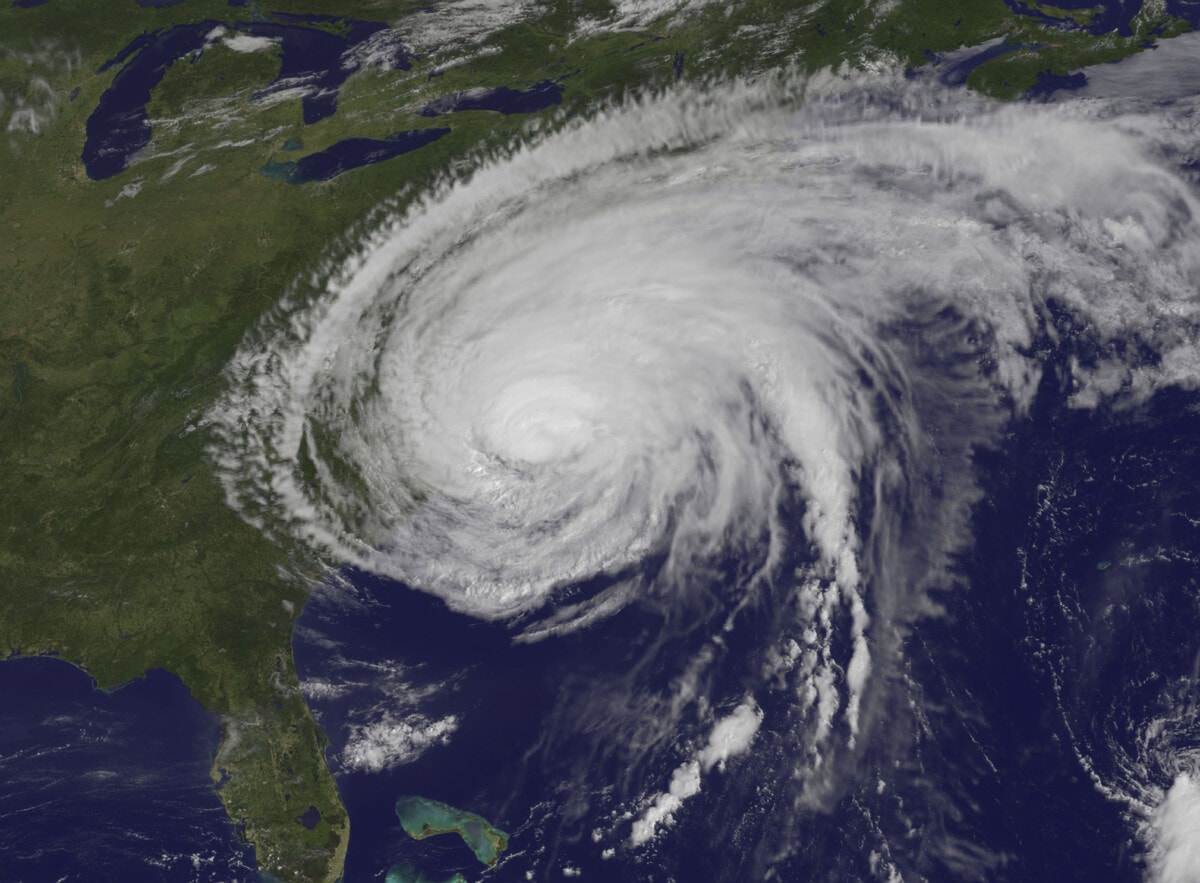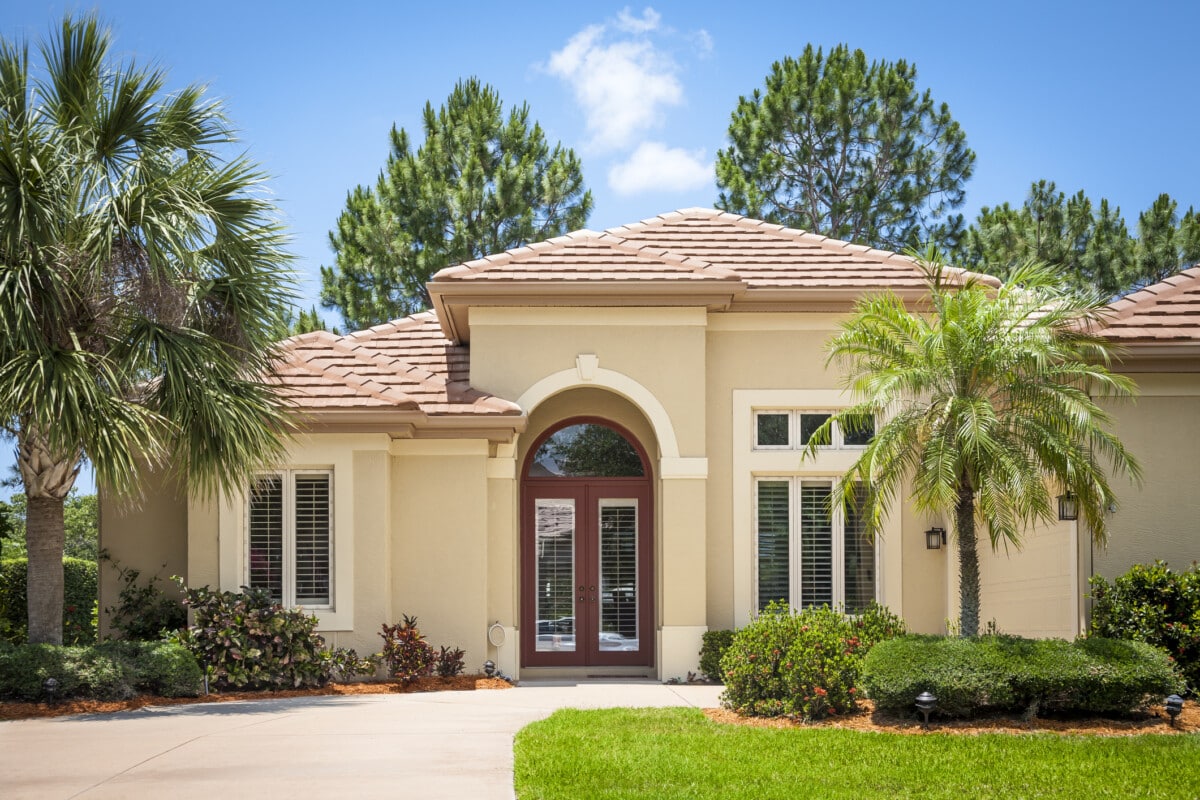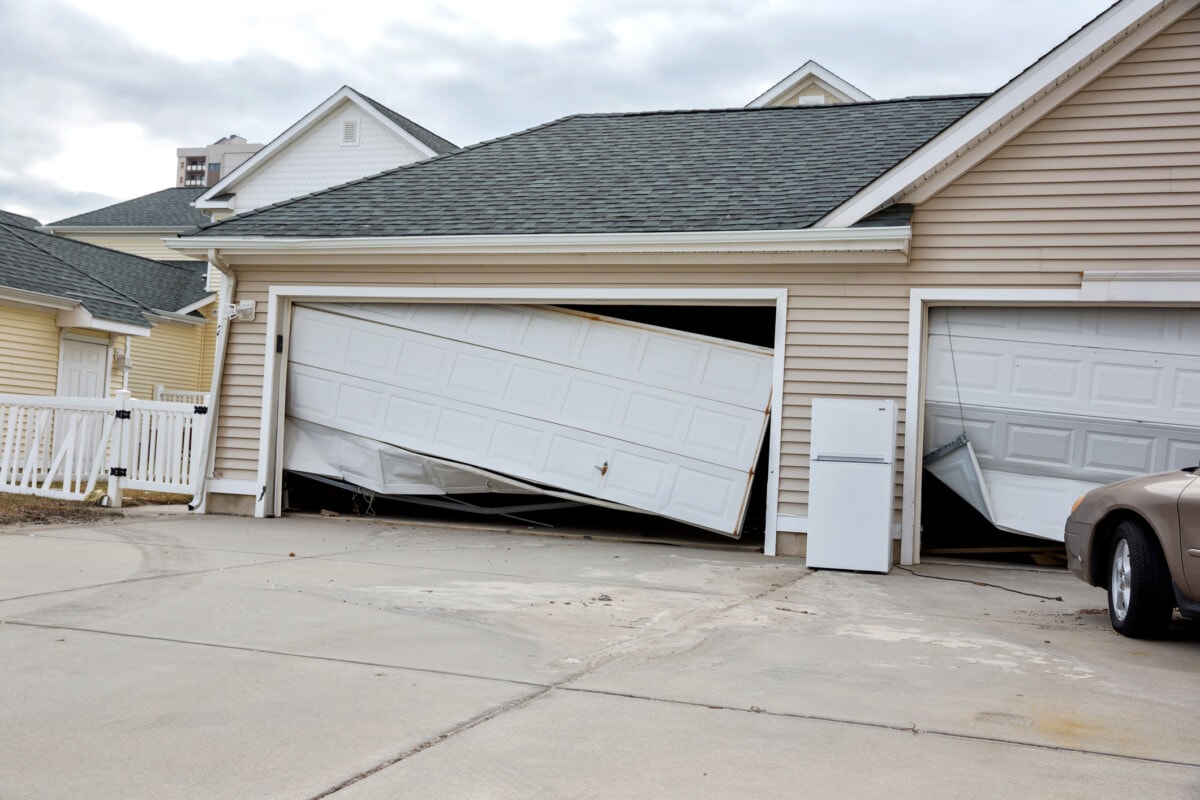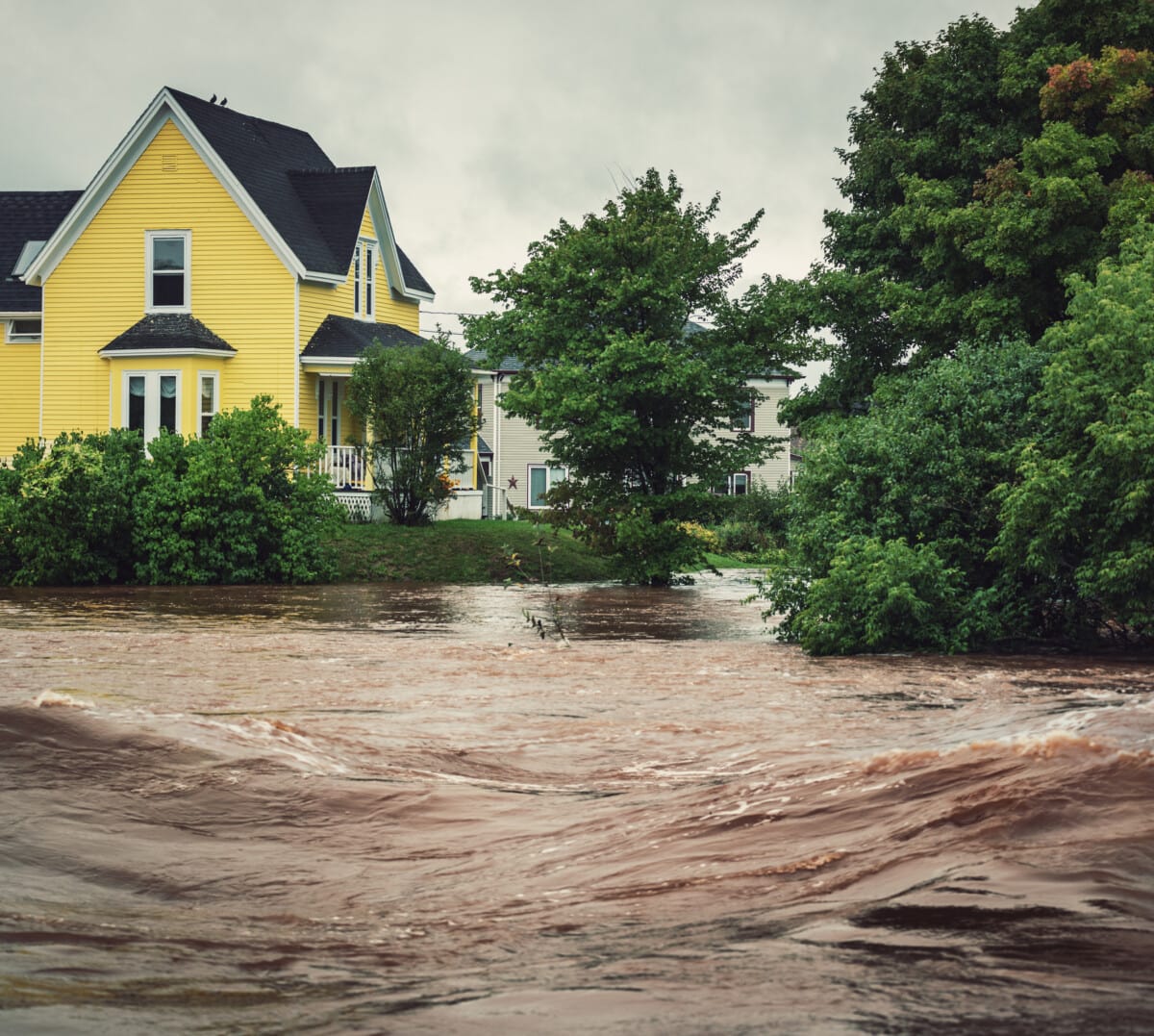
Rising summer temperatures herald the beginning of hurricane season. Luckily, the 2023 Atlantic hurricane season is predicted to be relatively mild, with 1-4 major hurricanes (category 3-5) and 5-9 mild hurricanes (category 1-2). Even with a milder season ahead, it’s essential to be prepared.
So, how do you prepare your house for a hurricane? Luckily, this Redfin guide has everything you need to know. Whether you live in a house in Tampa, FL, or a rental home in Wilmington, NC, read on for hurricane preparedness tips and tricks to help keep you and your family safe.

What is a hurricane?
A hurricane, also known as a cyclone or typhoon in other parts of the world, is a large and powerful tropical cyclone characterized by a low-pressure center surrounded by a spiral arrangement of thunderstorms that produce strong winds and heavy rain. They form over warm ocean waters near the equator. Key elements of a hurricane include the eye, eyewall, and rainbands.
Hurricanes can be mild to catastrophic, and can cause damage through storm surges (rising sea levels), high winds, and heavy rains, which can lead to flooding and landslides. They are especially bad if you live in a flood zone.
We measure hurricane severity based on wind speeds using the Saffir-Simpson scale. Here’s a quick breakdown:
- Category 1: 74-95 mph (minor damage)
- Category 2: 96-110 mph (moderate damage)
- Category 3: 111-129 mph (major damage)
- Category 4: 130-156 mph (severe damage)
- Category 5: 157 mph and higher (catastrophic damage)

How to prepare your house for a hurricane
Before the hurricane hits, there are ten important steps you should take to prepare your home, secure your valuables, and ensure your family remains safe. Let’s break them down.
1. Create a hurricane emergency kit
The first step of preparing for any disaster is to ensure you have a well-stocked, waterproof emergency supply kit, which can be a large tote, box, or carryable kit. Here’s a list of items to include:
- Water: Have at least one gallon of water per person per day for at least three days.
- Food: Include at least a three-day supply of non-perishable food items that don’t require cooking, such as canned goods, protein bars, peanut butter, dried fruits, and nuts.
- Manual can opener: Keep a manual one on hand to open canned food.
- Medications: If possible, pack a seven-day supply of prescription medications and other essential medicines.
- First aid kit: Include bandages, antiseptic wipes, tweezers, medical tape, gloves, and over-the-counter pain relievers.
- Hygiene supplies: Pack items like hand sanitizer, wet wipes, toothpaste, soap, menstrual products, and toilet paper.
- Flashlights and batteries: Keep a flashlight and a healthy supply of extra batteries on hand.
- Portable charger: A portable battery charger can keep your phone and other necessary electronics running if the power is out for a while.
- Cash and important documents: Keep some cash, as well as copies of your important documents (like passports, driver’s licenses, and insurance policies) in an accessible waterproof container
- Radio: A battery-powered or hand-crank radio can keep you updated on the storm’s progress and other important information if the power goes out.
- Clothing and bedding: Pack a complete change of clothes and sturdy shoes for each family member, and include warm bedding.
- Tools and supplies: Include items like a multi-tool, duct tape, a whistle to signal for help, and local maps. It’s also essential to keep plastic sheeting and zip ties to shelter in place.
- Other supplies: If you have pets, infants, or elderly household members, remember to pack pet food, infant formula, diapers, and any necessary medical equipment and backup power.
2. Secure doors and windows
Make sure all your doors and windows are secure and in good repair to prevent water from getting inside. Consider installing storm shutters or pre-cutting plywood to board up your windows. Additionally, reinforce your garage door with braces or strong plywood. You can go a step further and invest in a wind- or impact-resistant garage door or storm door, which can greatly reduce the risk of damage to your home.

3. Install a backup power source
Consider installing a generator or heavy-duty battery in case the power goes out for a long period of time. Remember to use gas-powered generators safely by keeping them dry and outdoors to prevent carbon monoxide poisoning.
If you have the budget and time before a storm hits, it can be a good idea to install solar panels or another renewable energy source, so you can power your home independent of the power grid. Keep in mind that you need batteries to store the power your solar panels generate.
4. Review your insurance coverage
Review your homeowner’s insurance policy to ensure you have coverage in case of hurricane damage, especially because many standard plans don’t cover disaster or flood damage. If your current homeowner’s insurance doesn’t cover your home, you can get insurance through Floods Smart, which is a national program managed by the Federal Emergency Management Agency (FEMA).
“Don’t wait until it’s too late to obtain flood insurance,” implores Jennifer Jones, Marketing Manager with Poulton Associates. “Most flood insurance carriers have a waiting period of up to 30 days, so act now before the storm comes.” Even if your home is in a low- or moderate-risk flooding area, flood insurance is still a good idea.
5. Establish a safe room
If your house doesn’t have a dedicated safe room, identify a small, windowless, first-floor room where you and your family can shelter during the hurricane. This is where you should keep your emergency supply kit and anything else you may need if you must shelter in place.
If your home doesn’t have a space where you can shelter safely, go to a friend’s or relative’s home or an open disaster shelter. Importantly, never use your basement to shelter during a hurricane, as flooding is common.
As always, follow evacuation recommendations and orders from authorities.
6. Inspect and repair your roof
Inspect your roof for loose tiles or shingles and other vulnerabilities. You can consider hurricane straps to ensure your roof is bolted to the rest of your house. In hurricane-prone regions, reinforcing the roof of your home can significantly decrease potential damage.
Many southern US states have recently passed hurricane-specific building codes for new buildings, which ensures that homes can withstand winds up to 130 miles per hour. Buildings in the High Velocity Hurricane Zone in Florida have even higher wind speed requirements.
Some states haven’t updated their building codes, however, so do your research and plan on installing your own protection.
7. Clean gutters and downspouts
Clear your gutters and downspouts of debris to ensure water can drain away from your house properly. This helps to prevent water damage and reduce the risk of roof collapse from excess rainwater weight. You can also have a professional to examine your home for potential risks
8. Trim trees and shrubs
Well-maintained trees and shrubs are less likely to become projectiles during high winds. To help, cut tree branches down to no more than four or five feet long and to remove any dead or dying branches or plants. Also, dispose of any trimmings and debris, so they don’t blow into the street or build up on your property.
9. Secure outdoor objects
Secure or bring indoors all outdoor furniture, decorations, garbage cans, and anything else not tied down. “These items can become dangerous projectiles during high winds,” notes Levi Kastner, owner of Kastner Insurance Group. “Additionally, take a detailed inventory of your valuables, including photos or videos of possessions, in case you make an insurance claim after the storm.”
10. Prepare an evacuation plan
Lastly, always have an evacuation plan in place for you and your family. Know the local hurricane evacuation routes and where the nearest shelters are. Remember to plan for your pets and elderly family members as well.

How to file an insurance claim after a hurricane
Insurance companies can be difficult to deal with following a hurricane. Luckily, we have expert guidance from April Weismann, Executive Vice President of HPM Insurance, to help guide you through the process. Here are seven steps:
- Assess any property damaged following the storm, make a list of damaged property and belongings, and take photos and video of damage for proof.
- Contact your insurance agent or carrier directly to file a claim.
- Prevent further damage by boarding windows or tarping the roof if necessary. If you can’t do it yourself, contact a restoration company to do it for you.
- Do not throw anything out until a company adjuster has assessed the damage and authorized you to do so.
- Lastly, be patient. After a large hurricane, companies work overtime to assist thousands of people filing claims. Unfortunately, it will likely take time for them to get to yours.
Final thoughts on how to prepare your house for a hurricane
When the hurricane does hit, you must be prepared. By following these ten steps, you can help reduce damage to your property and keep your family safe.
The post How to Prepare Your House for a Hurricane: 10 Tips for Homeowners appeared first on Redfin | Real Estate Tips for Home Buying, Selling & More.
from Redfin | Real Estate Tips for Home Buying, Selling & More https://ift.tt/nztl73c


No comments:
Post a Comment